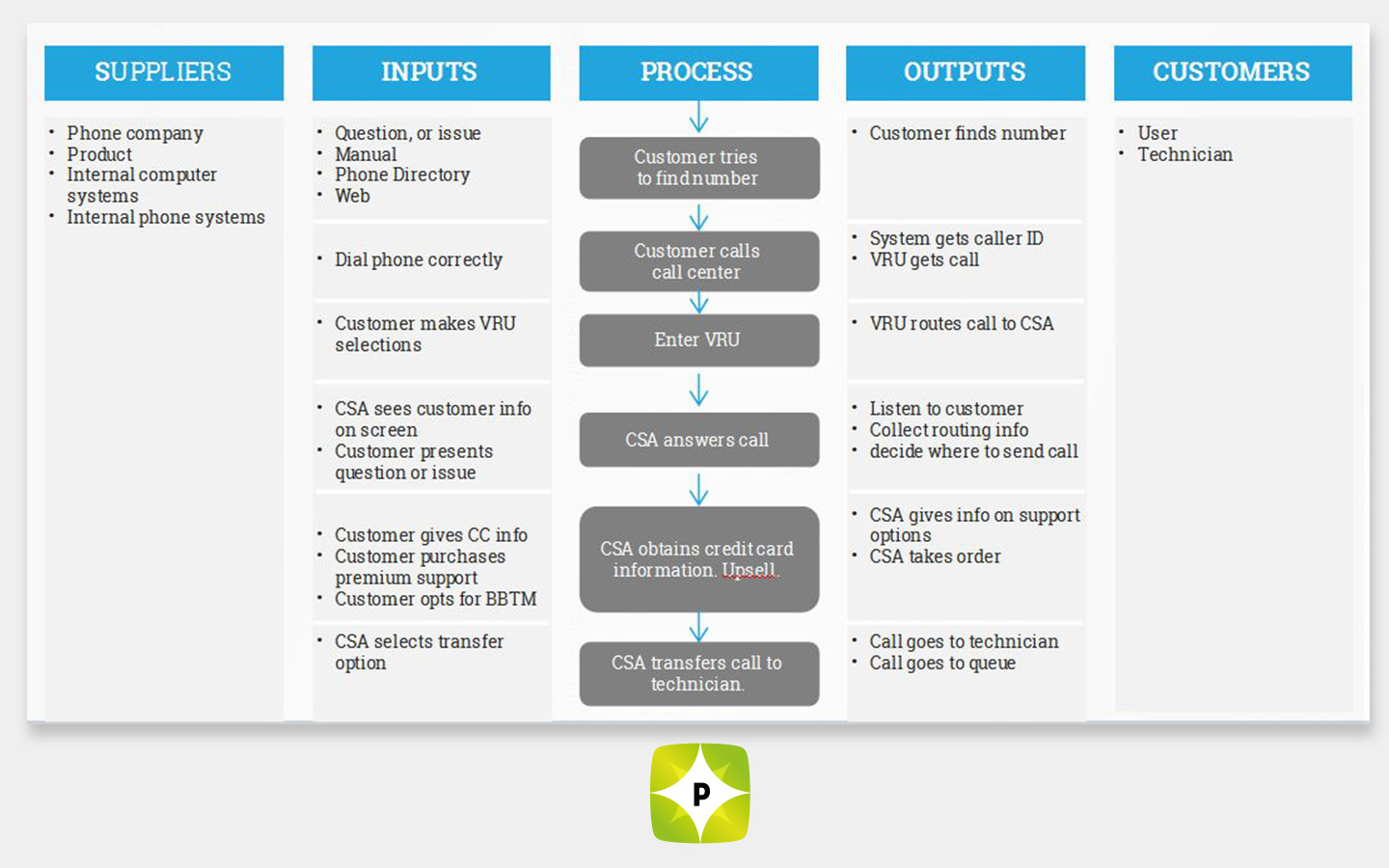-

A Change Agent’s Most Important Personal Attribute
Today I received a call from a person interested in becoming a certified Lean Six Sigma Black Belt. Of course, we value him as a customer and he will learn a great deal if he decides to enroll in our Six Sigma training. Among the things he’ll learn are both “hard skills” involving statistics and…
-

What Are SIPOC Maps and How Do You Use Them?
Kirby had been a service agent at the sales contact center for a long time. And he was a good one, one of the best. But his promotion to supervisor for a small group of agents was a new job to him and he wanted his team to do their job better. There were many…
-

What is Six Sigma?
For Motorola, the originator of Six Sigma, the answer to the question “Why Six Sigma?” was simple: survival. Motorola came to Six Sigma because it was being consistently beaten in the competitive marketplace by foreign firms that were able to produce higher quality products at a lower cost. When a Japanese firm took over a…
-

Mapping for Business Improvement
In my Six Sigma Leadership Process post I described the leadership process at the highest level, the L-1 level. I mentioned that the Improve phase of leadership required mapping core processes to an actionable level, a level where the Process Excellence Leadership Team–the PELT–could identify the critical to quality drivers in the process. In this…
-

Why Six Sigma Is Not TQM
My colleagues often tell me that there is no real difference between Six Sigma and TQM. “Show me where Six Sigma involves anything new.” Six Sigma employs some of the same tried-and-true tools and techniques of TQM. Both Six Sigma and TQM emphasize the importance of top-down support and leadership. Both approaches make it clear…
-

How to Create a Pareto Diagram Using MS-Excel
One tool that you will find yourself using several times during your Six Sigma project is Pareto analysis. Pareto analysis is named after the eminent 19th century Italian economist Vilfredo Pareto. His study of the distribution of income showed that income wasn’t uniformly distributed. A few high-income earners garnered a disproportionately large share of the…
-
The Art of Successful Six Sigma Projects: The Imperative of Management Support
Six Sigma projects are intricately woven tapestries of expertise, dedication, and systematic process improvement. However, their success hinges primarily on a factor often assumed, yet not always understood – management support. As we navigate the challenging yet rewarding journey of a Six Sigma project, it is worth contemplating: Is the support we seek truly what…
-
Finding Your Fit at The Pyzdek Institute
At the Pyzdek Institute, we offer a comprehensive range of Lean Six Sigma courses designed for professionals focused on meeting goals and tight deadlines. Choosing the right training is key to improving performance, which is why we provide courses for every skill level. Some of the basic features in our popular training courses are as…
-
The Learning Concept at Pyzdek Institute
During the manufacturing process, defects are inevitable and finding a way to minimize or eliminate them is paramount. Six Sigma and lean manufacturing are unique approaches that aid in addressing such errors, with Pyzdek Institute being at the center of training individuals on this one-size-fits-all approach. Here is what the learning concept of the institution…
